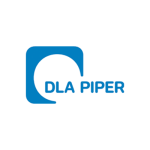Minerva Financial Group case
In September 2022, the Federal Court of Australia held In Minerva Financial Group v Federal Commissioner of Taxation [2022] FCA 1092 that the general anti-avoidance provisions in Australia’s income tax law applied to a pre-IPO business restructure that resulted in certain income of the Australian corporate group flowing to foreign residents via a trust structure, rather than being subject to corporate income tax in Australia.
The Australian corporate group conducted a financial services business in Australia that involved the establishment of various securitisation trust structures (for example, to hold loan receivables and securities), from which the Australian corporate group derived interest and related income. Under the relevant business restructure steps, a new parallel trust structure was established, such that the shares of the top company in the Australian corporate group and the units in the top trust of the new trust group were ‘stapled’ and held by the same Dutch parent entity.
Subsequently, the securitisation trusts were held under the trust group structure, rather than the corporate group. As such, the income from the securitisation trusts flowed through the new trust group structure (which were ‘pass-through’ vehicles for Australian income tax purposes). This meant that the net interest income derived by the securitisation trusts was ultimately subject to 10% interest withholding tax upon distribution by the top trust to the Dutch parent entity, rather than the 30% corporate income tax that was previously payable by the Australian corporate group in respect of such income.
The Australian Taxation Office (ATO) applied the general anti-avoidance rules in Part IVA of the Australian tax legislation to the restructure, having identified three schemes that were entered into for the sole or dominant purpose of obtaining a tax benefit for the taxpayer.
Federal Court ruling
The Federal Court held that Part IVA did not apply to the first scheme (the establishment of the trust structure). The court was satisfied that this step was primarily driven by commercial factors; in particular, the proposed IPO of the new stapled corporate and trust structure on the Australian Stock Exchange and related funding opportunities, notwithstanding that the IPO did not ultimately proceed due to market conditions.
However, the Federal Court upheld the ATO’s Part IVA determinations for the second and third schemes (the arrangements that resulted in the income from the securitisation trusts flowing through the new trust structure, rather than the existing corporate group). On this basis, the ATO’s cancellation of the tax benefits arising from these schemes was upheld by the Federal Court.
At the time of writing this article, no appeal had been filed by either party.
Lesson for multinationals
For multinationals, this case highlights that while Australia has in recent years introduced various anti-avoidance measures targeting cross-border arrangements, such as the multinational anti-avoidance law and the diverted profits tax, the general anti-avoidance rules are still an important consideration for any important business transaction.
As such, multinationals operating in Australia should be mindful of the general anti-avoidance rules, especially for any reorganisation that has the result of directing income offshore and out of the Australian corporate tax net.












